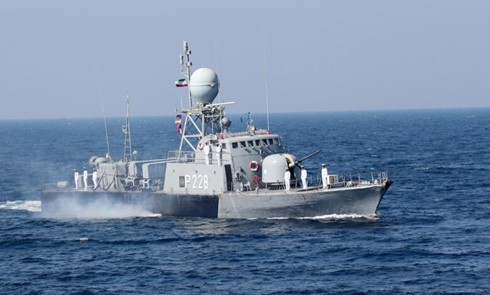
More
nations – including Denmark, Pakistan and Sri Lanka – are sending naval assets
towards the Middle East as pressure grows on the Houthis to rein in their
attacks on merchant shipping in the southern Red Sea and the Gulf of Aden. Of concern, however, are a trio of Iranian
naval ships that have started patrolling the area.
The
Houthis from Yemen have been waging a campaign to target Israeli-linked vessels
in the wake of the war breaking out between Israel and Hamas three months ago. In total, some 25 ships have been targeted
in the past couple of months with drones and missiles, and one car carrier and
its crew remain in Yemeni waters having been hijacked in November.
“These attacks are having a real
effect on the prices that people have to pay for food, for medicine, for energy.
Ships have to get diverted to other places. Insurance rates go up,†Blinken
said while on another whistlestop tour of the Middle East yesterday. “And the
basic principle of freedom of navigation is what’s at stake. So the
international community has a real stake in upholding that principle.â€Most containerlines have re-routed their
vessels from the Red Sea to longer voyages around the Cape of Good Hope
adding up to two weeks of delay. By contrast, tanker and dry bulk diversions
have been minimal until very recently.
According
to HSBC, the liner diversions have pushed spot rates on the Shanghai
Containerized Freight Index (SCFI) to all-time highs, outside of the covid era.
“Should the crisis remain unresolved in the
next couple of weeks, elevated spot rates could lead to higher contract rates
as liners are negotiating their annual contracts with retailers. This could
potentially help prevent the sector profits from declining too much vs the
expectations before the disruptions,†a new shipping report from HSBC argued,
while analysts at Linerlytica have charted what carriers are up to in terms of
choosing to divert or not.
While in the early stages of the Red
Sea shipping crisis, dry bulk and tankers remained largely unaffected this is
now changing.
Over
the past week, the numbers of panamax and geared bulkers entering the South
Atlantic from the North Atlantic have jumped according to new analysis from
brokers Braemar, signalling some avoidance of the Red Sea. Braemar had detected
a similar pattern for larger capesize ships a week ago.For tankers, analysis
from Vortexa shows diversions have picked up in the span of the last two weeks,
but these are not occurring en masse as tankers and volumes continue to flow via
the Red Sea. Instead, these diversions
are at large constrained to US/EU/Israel-linked entities.